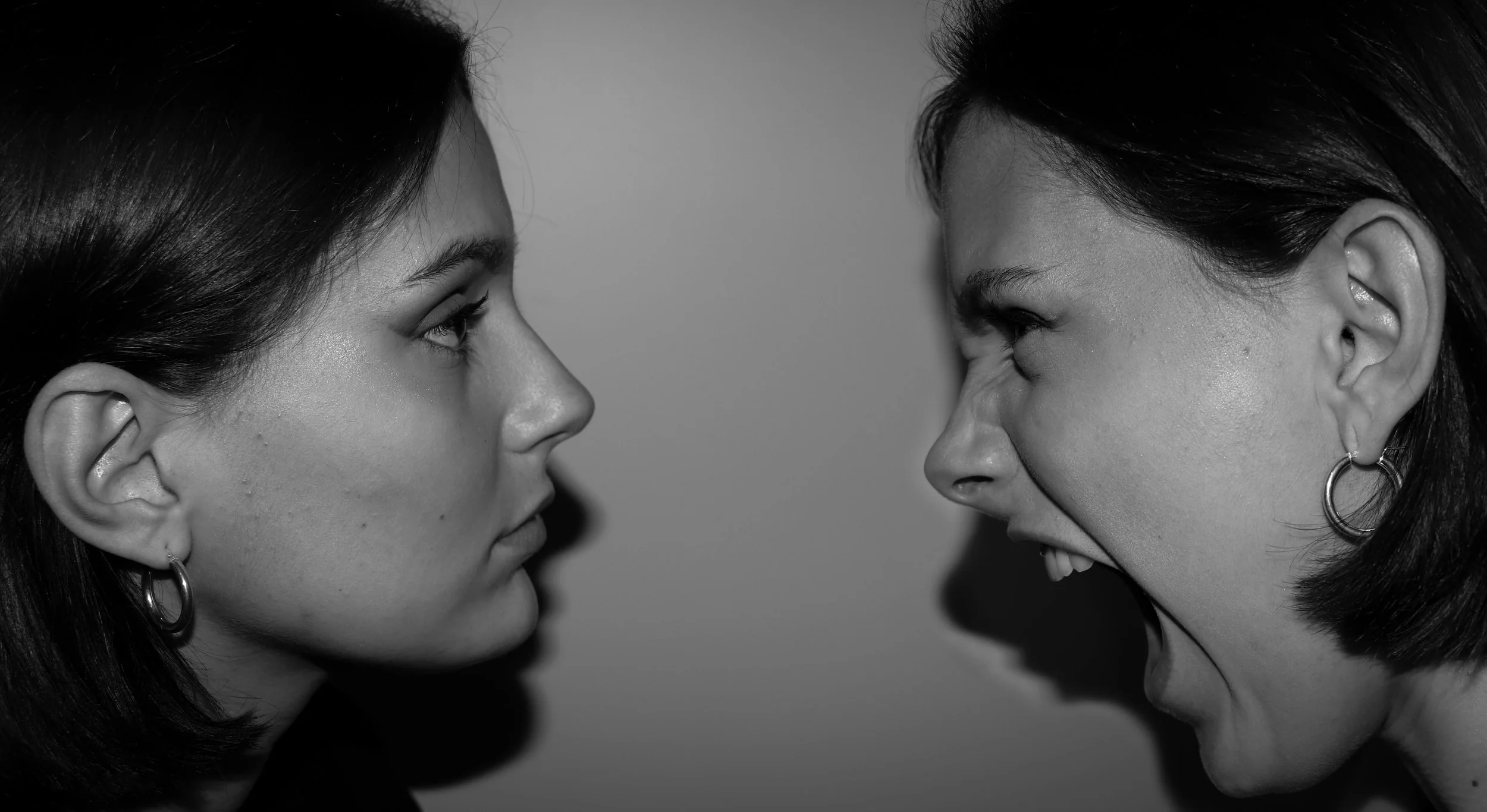Breaking Free from Codependency and Toxic Relationships: Letting Go, Healing, and Reclaiming Your Self-Worth
Toxic relationships and codependency can be some of the hardest relational patterns to overcome. Deep emotional investment in someone or a relationship can cause us to lose connection with our personal needs and make it difficult to notice the negative impact the relationship is having on us. Walking away from a toxic relationship requires rediscovering your identity, healing from the emotional scars, and learning what a secure, healthy relationship is (sometimes for the first time ever).
This blog post will help you understand codependency and other toxic relationship patterns while supporting you through the difficult process of letting go and restoring your self-identity through self-compassion.
Recognizing Codependency and Toxic Patterns
What Is Codependency?
Codependency is an unhealthy emotional reliance on another person, often at the expense of your own needs and well-being. It can reveal itself through people-pleasing behaviours, challenges in boundary-setting, or carrying too much responsibility for another person's wellbeing. Caring for others is a wonderful and important quality, but codependency blurs the line between supportive behaviour and harmful self-sacrifice.
Unlike secure attachment, which allows for mutual respect and independence, codependent relationships are rooted in fear—fear of abandonment, rejection, or being alone. If you find yourself constantly putting others first, neglecting your own well-being, or feeling guilty for prioritizing yourself, it may be a sign of codependency.
Signs of a Toxic Relationship
Not every difficult relationship is “toxic,” but there are certain behaviours that indicate an unhealthy dynamic. These include:
Emotional manipulation – Feeling pressured or guilted into doing things you’re uncomfortable with.
Gaslighting – Being made to question your own reality or feelings.
Flipping the script – The other person consistently making you feel like the problem when you express concerns.
Lack of respect – Disregarding your needs, boundaries, or emotions.
Emotional unavailability – Feeling unheard, unseen, or unimportant in the relationship.
Violence or threats – Any form of physical, emotional, or verbal abuse.
These behaviours drain your emotional energy and reinforce codependency by making you believe that your needs don’t matter.
Why It’s Hard to Let Go
Even when you recognize the toxicity, leaving the relationship can feel like an impossible task. Codependent relationships tend to form a deep emotional connection which makes separation feel as if one is losing their self-identity. Additionally, some toxic relationships follow a pattern of emotional or physical harm, followed by apologies together with gestures of affection (some refer to this as “love bombing”) and promises of change. These temporary displays of right behaviour provide a sense of hope, which makes staying in the relationship seem like a reasonable possibility.
Fear is probably the strongest force which prevents people from moving forward. The dread of loneliness, the possibility of backlash, combined with the stress of having to start over with a new partner can immobilize a person and keep them from making the changes they might already know they need to make. Plus, the deep emotional investment of pouring time, love, and effort into someone can make it painful to walk away, even when you know it's in your best interest.
Feelings of guilt combined with self-doubt can create additional challenges. Many people in toxic relationships begin to question themselves, saying, “Am I being too sensitive?” “What if I just try harder?” “What if they do change?” Your intuition becomes hard to trust when manipulation and emotional dependence merge with gaslighting that distorts your perception. Constant allegations that “you are the issue” or that “you'll never find someone better” can lead you to accept these harmful beliefs.
Staying in a relationship due to fear, obligation, or nostalgia is self-betrayal rather than love—and this awareness is essential to breaking free. This means recognizing that love should not be built on conditions, control, or emotional exhaustion. Stepping away from a toxic relationship requires bravery, but it leads to healing, self-respect, and closer to finding real, lasting love.
Letting Go Without Guilt
The Myth of the “Perfect” Relationship
People often cling to the belief that enough effort can rescue any relationship. Although it’s true that healthy relationships do require commitment and effort, this should never be at the expense of your own well-being.
I once worked with a client who made the courageous decision to leave a toxic relationship. We spent months planning what that would look like for them and how they would navigate the aftermath. The fear of acting on this plan was paralyzing for a while, but when they finally took the first step to walk out of that house… they never looked back. After their life had settled down somewhat, it was powerful for them to think back on the fears and doubts they once had, and to notice how many good things were waiting for them on the other side.
Validating Your Decision to Leave
Walking away isn’t selfish—it’s self-love. Staying in a toxic relationship because of guilt or fear only adds to your emotional distress. Healthy relationships should be full of love that is freely given rather than earned through sacrifice. Remind yourself that choosing a life of peace isn’t about disconnection or abandoning someone else—it’s about caring for yourself enough so that you can offer something of value to the people that matter most to you.
Managing Guilt and Fear
The feeling of guilt when you place your needs ahead of others is common due to lifelong conditioning to always put others first. These steps can help you manage your feelings of guilt:
Reframe guilt as growth – Feeling guilty means you’re breaking old patterns and making the first choice for your own well-being. Celebrate this huge first step!
Practice self-compassion – Treat yourself with kindness, like you would a dear friend. It’s okay that the decision to leave is hard—that makes sense! And it’s not your fault that the relationship isn’t working. As the saying goes, “It takes two to tango,” and we can only handle someone else’s irresponsibility for so long.
Seek support – Whether through therapy, friends, or support groups. Talking about your experience can help reaffirm your decision.
Rebuilding Your Identity and Self-Compassion
Rediscovering Who You Are
Leaving toxic relationships gives freedom and opportunity for people to reclaim hidden aspects of their identity. Spend time exploring your true self apart from your partner:
Which hobbies and interests did you stop pursuing because of the relationship?
What dreams did you put on hold?
Which activities make you happy when you are alone?
To reconnect with your authentic self, consider journaling about these questions, work with a counsellor or therapist, or simply start exploring new activities you might now enjoy.
Practical Steps for Rebuilding Self-Worth
Mindfulness and Self-Compassion – Engage in mindfulness meditation or prayer, alongside positive affirmations and gratitude exercises to nurture self-kindness.
Setting Boundaries – Master the art of saying “no” without fear or guilt. Healthy boundaries support your emotional health while establishing the basis for secure relationships.
Exploring Your Passions – Rediscover what brings you joy by actively taking part in your favourite hobbies and creative activities.
Nurturing Self-Compassion
Healing isn’t just about “moving on.” The journey of healing requires you to discover new ways to love yourself that you haven’t experienced in the past (or at least, for a very long time). Daily acts of self-compassion can transform your life because it serves as the antidote to self-doubt and fuels you for the journey ahead.
Healing and Moving Forward
Time and Patience
Healing isn’t linear. Some days will provide a sense of freedom, while other days may bring intense feelings of fear or sadness. Allow yourself time to heal because healing is a process, not a destination.
Seeking Support
You don’t have to walk this journey alone. Professional counselling or therapy, support groups, or sharing your thoughts with people you trust can help you along the way. There are also incredible resources like:
Set Boundaries, Find Peace: A Guide to Reclaiming Yourself by Nedra Glover Tawwab
Good Boundaries and Goodbyes: Loving Others Without Losing the Best of Who You Are by Lysa TerKeurst
The most valuable gift you can give yourself is to invest in your healing journey.
Conclusion
Breaking free of codependency and toxic relationships may be one of the most difficult journeys you will ever experience, and it may also be the most rewarding. It requires courage and self-awareness, as well as placing your needs ahead of others for the first time.
But here’s the truth: You are worthy of love that doesn’t require you to lose yourself in the process. You deserve to have connections that support your well-being instead of draining your energy. The most critical realization is that you have the power to leave behind what is no longer beneficial and move toward the life you were destined to live.
Healing takes time, but every step forward—no matter how small—is a victory. And with patience, support, and self-compassion, you will create a future built on love, respect, and a deep, unshakable sense of self-worth.




